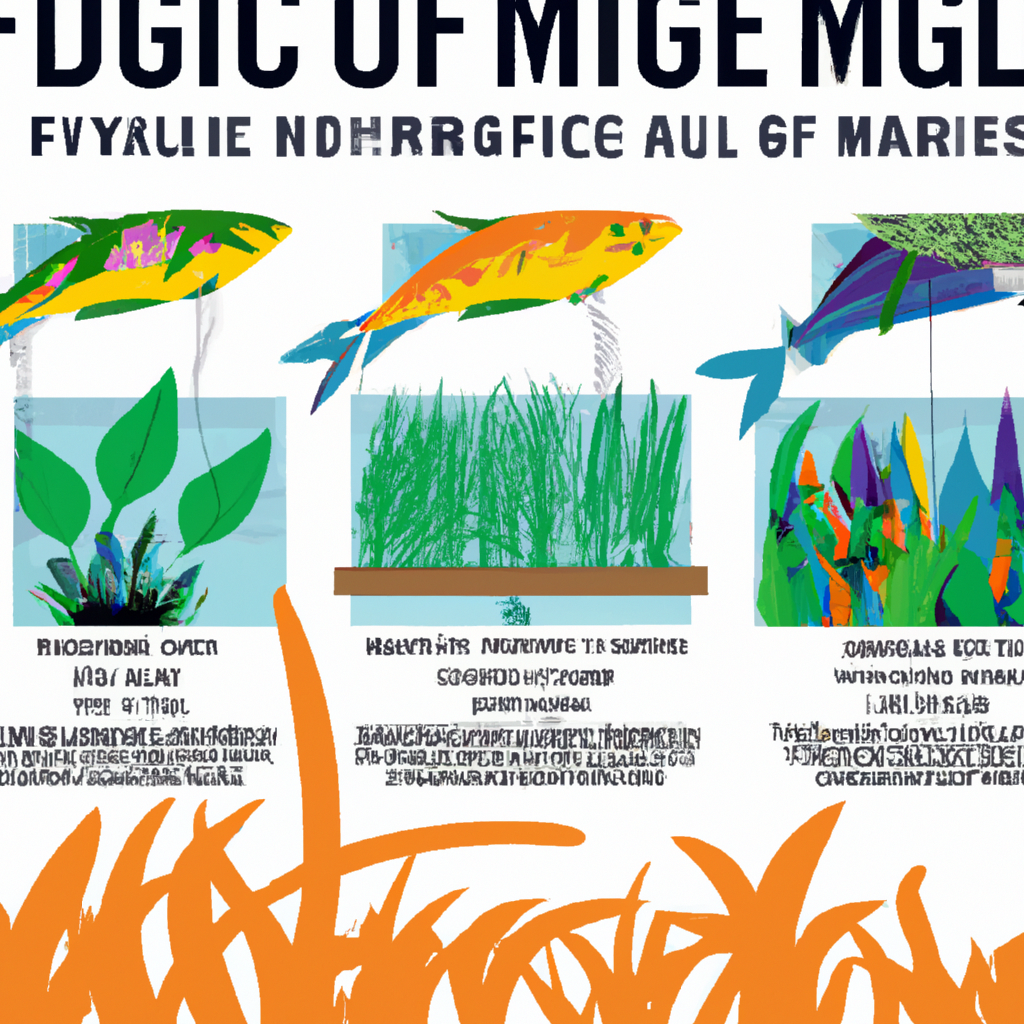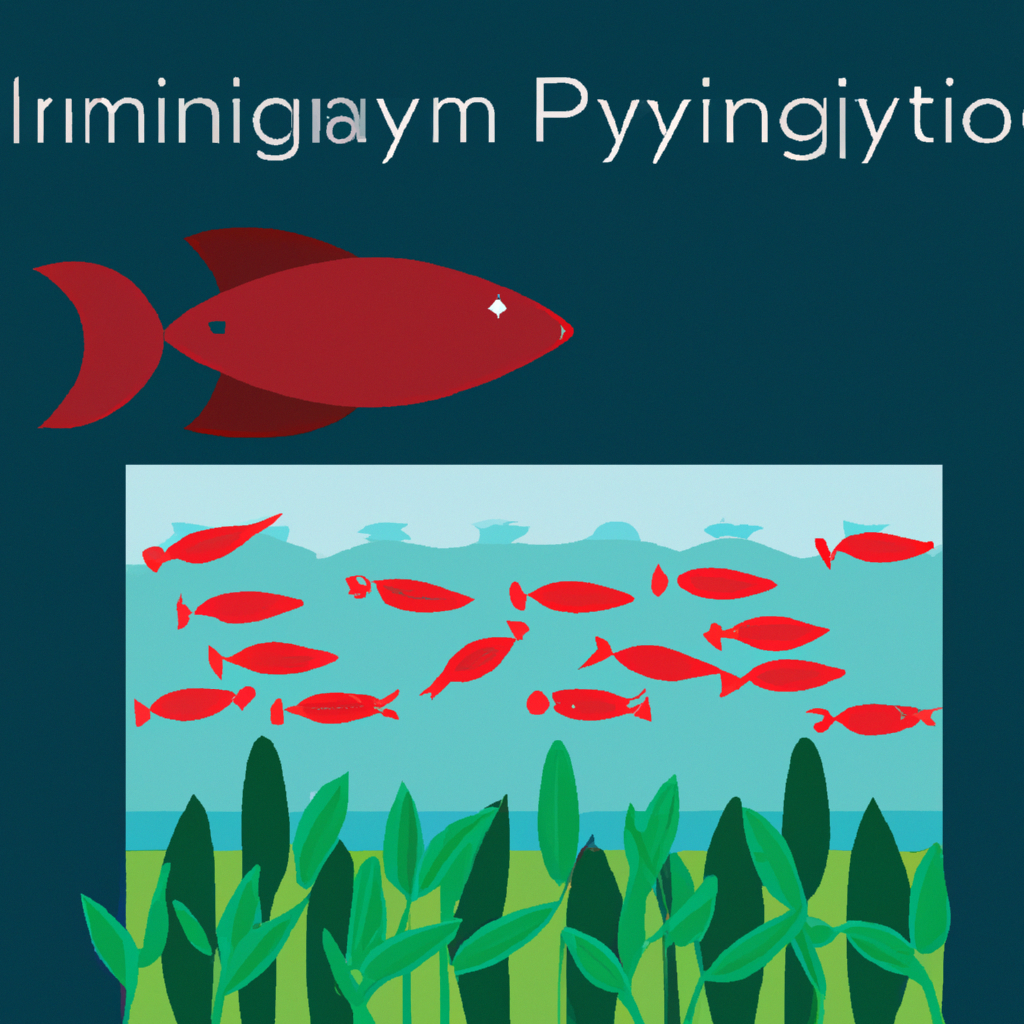Imagine a future where our cities are not just concrete jungles, but thriving ecosystems that nourish both the environment and its inhabitants. In this future, urban farming plays a vital role, allowing us to grow fresh, nutritious food right in the heart of our cities. And at the forefront of this revolution is aquaponics, a sustainable farming method that combines aquaculture and hydroponics. By harnessing the power of nature, aquaponics not only conserves water and land resources but also provides a symbiotic ecosystem where fish and plants work together to create a truly sustainable future. Step into the world of aquaponics and discover the exciting possibilities it holds for the future of urban farming.
Aquaponics: A Sustainable Solution for Urban Farming
What is Aquaponics?
Aquaponics is a sustainable farming method that combines aquaculture (the cultivation of aquatic animals) with hydroponics (the cultivation of plants in water) in a symbiotic environment. In this innovative system, fish waste provides nutrients for plant growth, and the plants, in turn, purify the water for the fish. It is a closed-loop system that mimics the natural cycles of our ecosystems, creating a self-sustaining ecosystem for both fish and plants.
The Benefits of Aquaponics
Aquaponics offers numerous benefits that contribute to its growing popularity in urban farming:
-
Efficient Use of Resources: The closed-loop system of aquaponics conserves water by recycling it within the system, using only a fraction of the water required in traditional farming. Additionally, the nutrient-rich water eliminates the need for chemical fertilizers, making it an environmentally friendly and sustainable farming method.
-
Increased Crop Yield: The combination of hydroponics and aquaculture allows for year-round crop production since plants can receive the essential nutrients they need at all times, resulting in accelerated growth and higher yields compared to traditional farming methods.
-
Space Optimization: Urban areas often face limited land availability, but aquaponics presents a solution. Vertical aquaponics systems can be implemented, allowing for the cultivation of plants in a vertically stacked arrangement, maximizing the use of vertical space and enabling farming in urban settings with limited land resources.
-
Improved Food Safety: With aquaponics, there is greater control over the growing environment, reducing the risk of pests, diseases, and contamination. By eliminating the need for pesticides and herbicides, aquaponics produces organic and safe food for urban communities.
-
Lower Environmental Impact: Aquaponics minimizes the use of chemicals, conserves water, and reduces greenhouse gas emissions associated with transportation, making it a sustainable farming method that contributes to a healthier planet.
The Role of Aquaponics in Urban Farming
As global urbanization continues to rise, the demand for fresh, locally grown produce intensifies. Aquaponics plays a crucial role in urban farming by providing a sustainable solution to meet these demands. By utilizing limited space and reducing the environmental impact, aquaponics makes it possible to grow fresh produce in the heart of cities, addressing food security issues, and promoting healthier lifestyles for urban dwellers.

The Components of Aquaponics Systems
Fish Tanks
Fish tanks are the core component of aquaponics systems, housing the fish that provide essential nutrients for plant growth. The size and type of fish tank depend on the scale of the aquaponics system. Efficient filtration systems are integrated into the tanks to remove solid waste and ensure a clean and healthy environment for the fish.
Grow Beds
Grow beds serve as the planting areas for the plants in an aquaponics system. They are filled with a medium such as gravel or clay pellets that provide support for the plants. The nutrient-rich water from the fish tanks flows through the grow beds, allowing the plants to absorb the necessary nutrients for growth. The plants’ root systems also act as a filter, purifying the water for the fish.
Plumbing and Pumps
Plumbing and pumps are responsible for circulating water between the fish tanks and grow beds. Water is pumped from the fish tanks to the grow beds, allowing the plants to absorb the nutrients. Afterward, the water flows back to the fish tanks, completing the closed-loop system. Proper plumbing and pump systems are crucial for maintaining the balance and efficient operation of the aquaponics system.
Biofilter
Biofilters are essential components of aquaponics systems as they help in maintaining water quality. Beneficial bacteria colonize the biofilter and convert toxic ammonia, produced by fish waste, into nitrites and then nitrates, which are essential nutrients for plant growth. The biofilter ensures the water remains clean and suitable for both fish and plants.
Water Quality Testing
Regular water quality testing is vital to ensure the optimal conditions for fish and plant health. Testing parameters such as pH, ammonia, nitrite, nitrate levels, and dissolved oxygen levels help monitor the stability of the aquaponics system. By closely monitoring water quality, adjustments can be made to ensure the well-being of both the fish and plants in the system.

Successful Examples of Aquaponics in Urban Farming
Green Sense Farms
Green Sense Farms, located just outside of Chicago, is one of the largest commercial vertical farms utilizing aquaponics. With their advanced aquaponics system, they are able to produce high-quality, pesticide-free crops year-round. Green Sense Farms has partnered with local grocery stores and restaurants, ensuring fresh produce is easily accessible to the urban community.
Sweet Water Organics
Sweet Water Organics, based in Milwaukee, has transformed a former industrial site into a thriving aquaponics farm. They have successfully integrated aquaponics with education and community engagement programs, providing hands-on learning opportunities and promoting sustainable food systems. Sweet Water Organics continues to inspire others by demonstrating the potential of aquaponics in urban farming.
Gotham Greens
Gotham Greens is an innovative urban agriculture company with aquaponics facilities in various cities across the United States. Their rooftop aquaponics farms utilize the open space of buildings to produce a wide range of fresh greens and herbs. By integrating sustainable food production into urban landscapes, Gotham Greens contributes to local food security while reducing food miles and greenhouse gas emissions.

Challenges and Limitations of Aquaponics in Urban Farming
High Initial Investment
Implementing an aquaponics system requires a significant initial investment. Costs include the construction of fish tanks, grow beds, plumbing systems, and the installation of pumps and filtration systems. Additionally, specialized knowledge and expertise are needed to set up and maintain the system effectively. However, as the technology advances and the demand for aquaponics increases, costs are expected to decrease, making it more financially accessible for urban farmers.
Energy Consumption
Aquaponics systems require energy to power pumps and maintain the necessary environmental conditions for fish and plant growth. However, advancements in energy-efficient technologies such as solar-powered pumps and LED lighting have helped reduce energy consumption. Furthermore, the ability to integrate aquaponics with smart technology allows for real-time monitoring and optimization of energy usage.
Limited Crop Variety
While aquaponics is suitable for cultivating various leafy greens, herbs, and certain fruits such as tomatoes and strawberries, it may not be ideal for growing some crops that require specific soil conditions or extensive root systems. The limitations in crop variety can be overcome through innovation and research, as farmers and scientists continue to explore new techniques and experiment with different plants in aquaponics systems.

The Future Potential of Aquaponics in Urban Farming
Integration with Smart Technology
The integration of aquaponics with smart technology has the potential to revolutionize urban farming. Automation and real-time monitoring systems can optimize the conditions for fish and plant growth, reducing resource consumption and maximizing yields. Sensors can detect changes in water quality, temperature, and nutrient levels, allowing immediate adjustments to maintain optimal conditions.
Community Engagement
The future of aquaponics lies in fostering community engagement and involvement. Urban farms that utilize aquaponics can provide educational programs, workshops, and volunteering opportunities to educate the public about sustainable food systems. Engaging the community in the food production process not only promotes healthier eating habits but also strengthens the connection between urban dwellers and the food they consume.
Vertical Farming Expansion
Vertical farming, combined with aquaponics, has enormous potential for the future of urban farming. The vertical arrangement of crops in multi-level structures maximizes land utilization, allowing for greater crop yield in limited urban spaces. Vertical farms can be integrated into residential and commercial buildings, providing fresh produce directly to the local community and reducing the ecological footprint of food production.

Promoting Aquaponics and Urban Farming
Government Incentives and Support
Government entities can play a significant role in promoting aquaponics and urban farming through incentives and support. Policies that encourage sustainable agricultural practices, funding grants for aquaponics initiatives, and providing tax benefits to urban farmers can incentivize the adoption and expansion of aquaponics systems. By recognizing the potential of aquaponics, governments can contribute to the development of sustainable food systems.
Educational Programs and Workshops
Building awareness and knowledge about aquaponics and urban farming is essential for its growth and acceptance. Schools, universities, and community organizations can organize educational programs and workshops to teach individuals the science and benefits behind this innovative farming method. By equipping future generations with the knowledge and skills for sustainable food production, we can pave the way for a more resilient and environmentally conscious society.
Promotion of Sustainable Food Systems
Promoting aquaponics and urban farming goes hand in hand with advocating for sustainable food systems. Educating consumers about the benefits of locally grown, organic produce can help create a demand for these products. Restaurants, grocery stores, and farmers’ markets can actively support and promote aquaponics by sourcing and offering these sustainable food options. By choosing sustainable food, consumers contribute to the growth and success of aquaponics and urban farming initiatives.
In conclusion, aquaponics offers a sustainable solution for urban farming, addressing the challenges of limited space, resource efficiency, and environmental impact. The combination of hydroponics and aquaculture creates a closed-loop system that maximizes crop yield while minimizing water usage and energy consumption. Despite some challenges and limitations, the future potential of aquaponics in urban farming is promising. Integration with smart technology, community engagement, and vertical farming expansion are key factors that will drive its success. By promoting aquaponics and supporting sustainable food systems, we can work towards a future where fresh, locally grown produce is accessible to all, regardless of urban living conditions.













